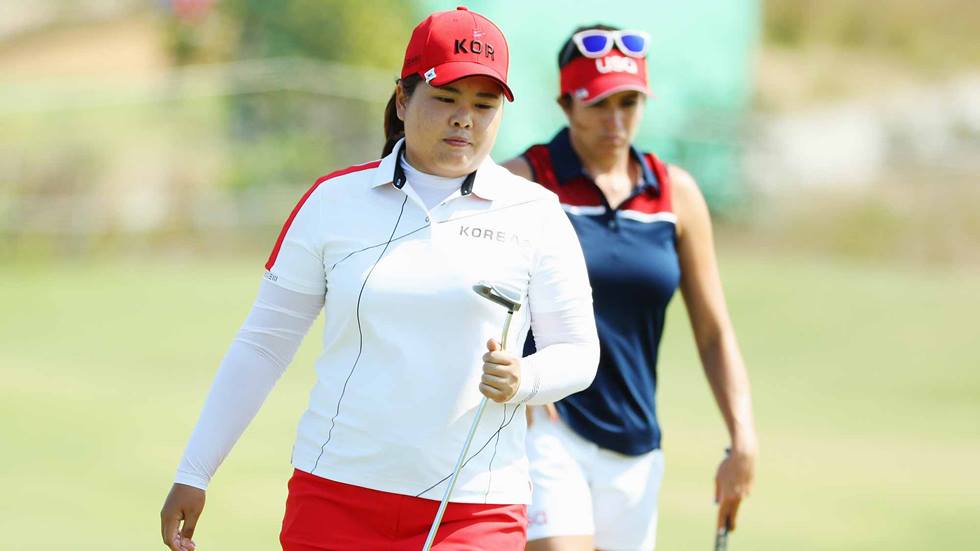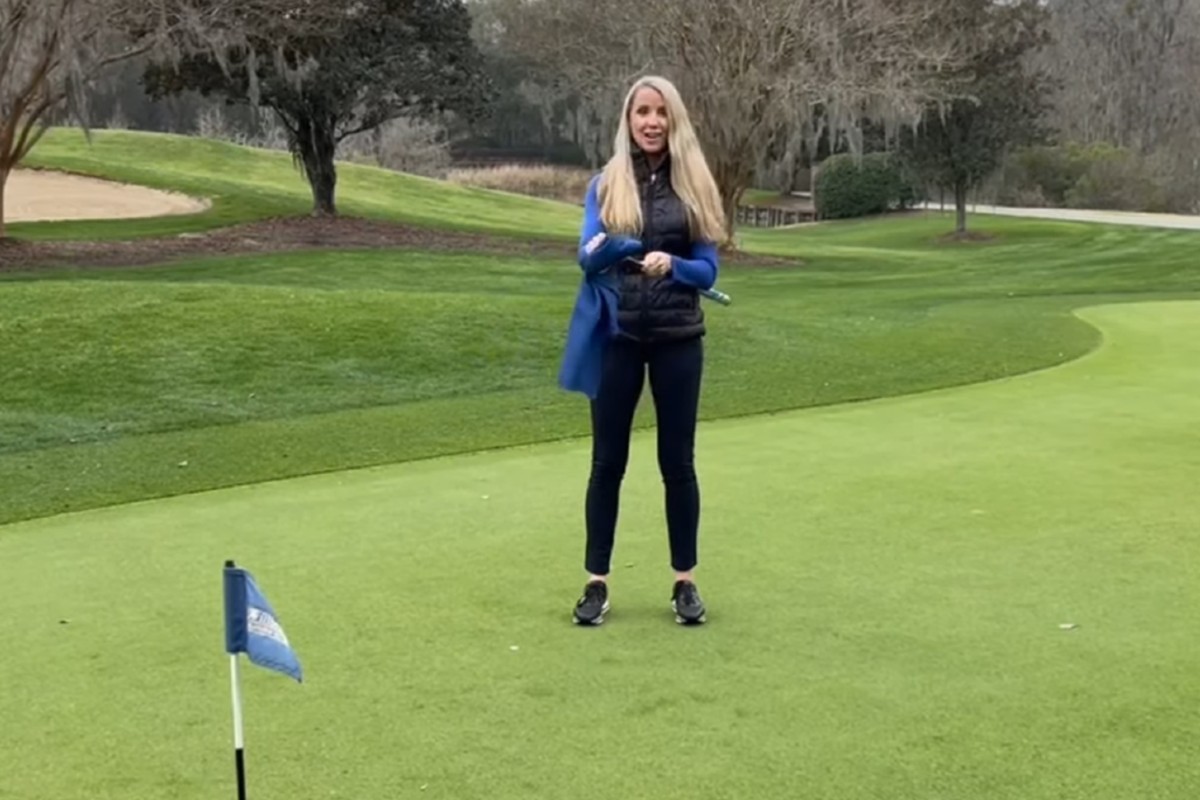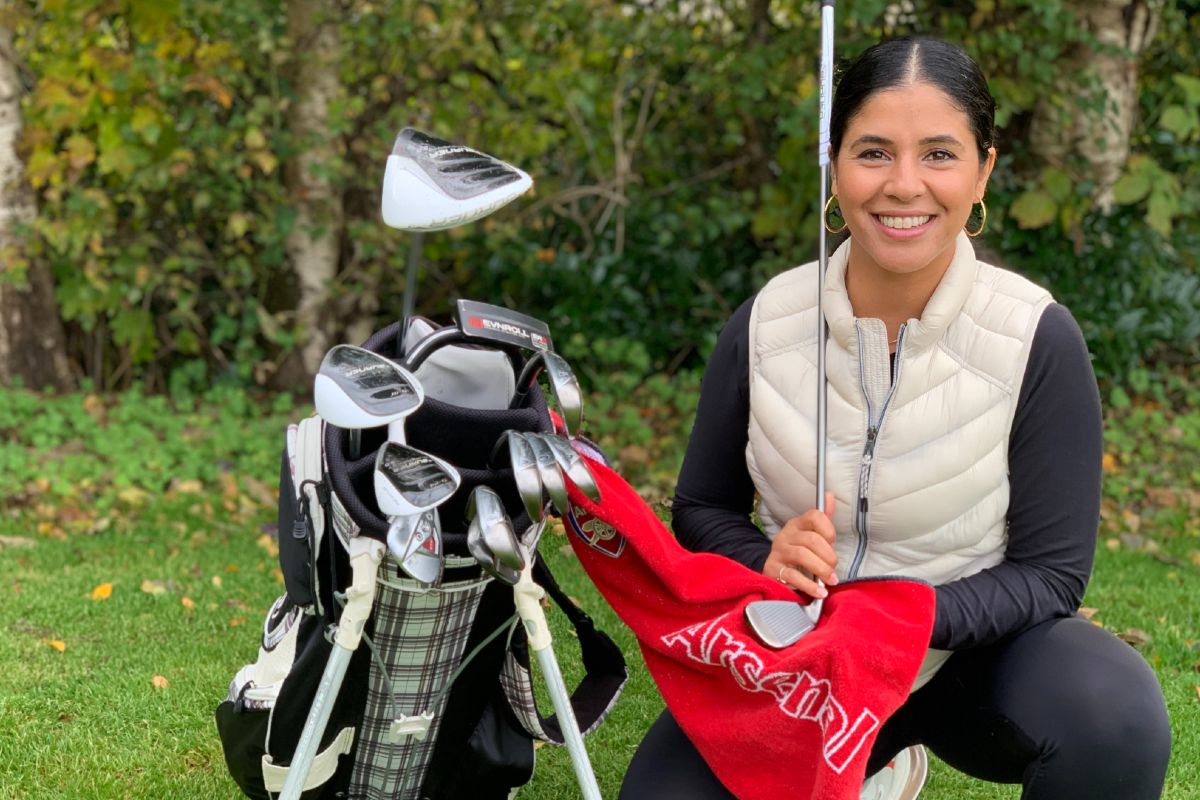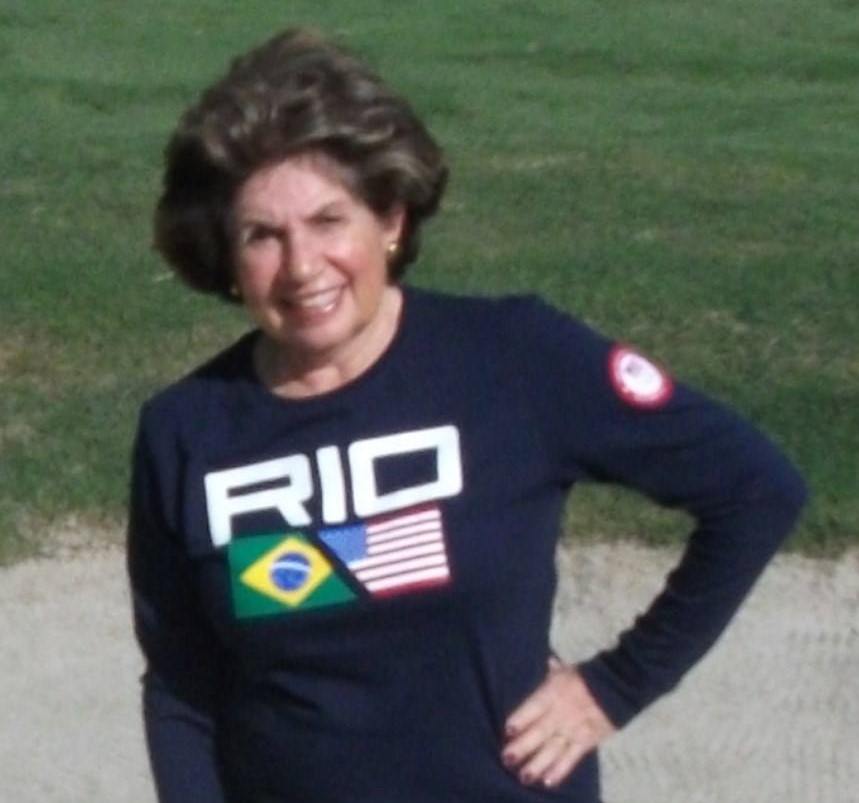 I love this photo of me, but I have to be honest. The photo was taken in a practice bunker on my home course in Florida on the first day of the Olympic Games. I bought the tee-shirt online because I knew these Rio Olympics were going to be historic and I couldn’t be there. And even though I would experience the competitions on television with awesome coverage by Annika Sorenstam, I wanted some physical memorabilia to document the re-introduction of golf to the Olympic Games after a lapse of over a century.
I love this photo of me, but I have to be honest. The photo was taken in a practice bunker on my home course in Florida on the first day of the Olympic Games. I bought the tee-shirt online because I knew these Rio Olympics were going to be historic and I couldn’t be there. And even though I would experience the competitions on television with awesome coverage by Annika Sorenstam, I wanted some physical memorabilia to document the re-introduction of golf to the Olympic Games after a lapse of over a century.
I already had one Olympic memory. Several decades ago while vacationing in Greece. I visited the site of the ancient Olympia stadium. I could not resist stepping back in history and running the 200-yard length of the field. I wanted to know that I was there – to experience what Olympians experienced centuries ago. And that’s when my love-affair with the Olympic Games began. And it has swept me along golf’s “Road to Rio.”
The return of the sport of golf – let’s call it a “sport” and not just a “game” – to the Olympics is a big deal. I knew from previous conversations with LPGA Commissioner, Mike Whan how hard the International Golf Federation (the IGF) had worked on all the logistics of determining the qualification process and the format.
Once I understood the qualification process, I started tracking the Women’s Rolex World Golf Rankings – weekly. What 60 female golfers from what countries would qualify for golf’s return to the Olympic Games? And, every day I received my Google-Alert on the Zika virus with threats of canceling the Games.
And then the news arrived that some of the top male golfers were opting out of the Olympics. So what! The top women golfers were all on board. Stacy Lewis was going to be married right before the Olympics began, and she was playing. Every “tipping point” has a leader, and for many women golfers, Stacy was it.
Everyone who had doubts about whether golf belonged in the Olympics was holding their breath when the men’s golf competition began. And then the world witnessed that a good putt was not just “dumb luck;” that a long, perfect drive was not just an “accident; and that a player’s concentration not only reflected skill and good coaching but also confidence that came from hours and hours of practice. After the dramatic finish to the men’s competition, it was pretty clear that golf did indeed belong in the Olympics!
And I don’t know anyone who questions that the three women who won medals in Rio: Inbee Park of Korea (Gold), Lydia Ko of New Zealand (Silver) and Shanshan Feng of China (Bronze) did not represent top Olympic athletes. And the fifty-seven women who did not earn a medal will always be “Olympians.” A point that Annika Sorenstam made several times in her excellent coverage of the competition. [Watch for an additional article “Lessons from Annika” based on her comments from the NBC-TV announcer’s booth.]
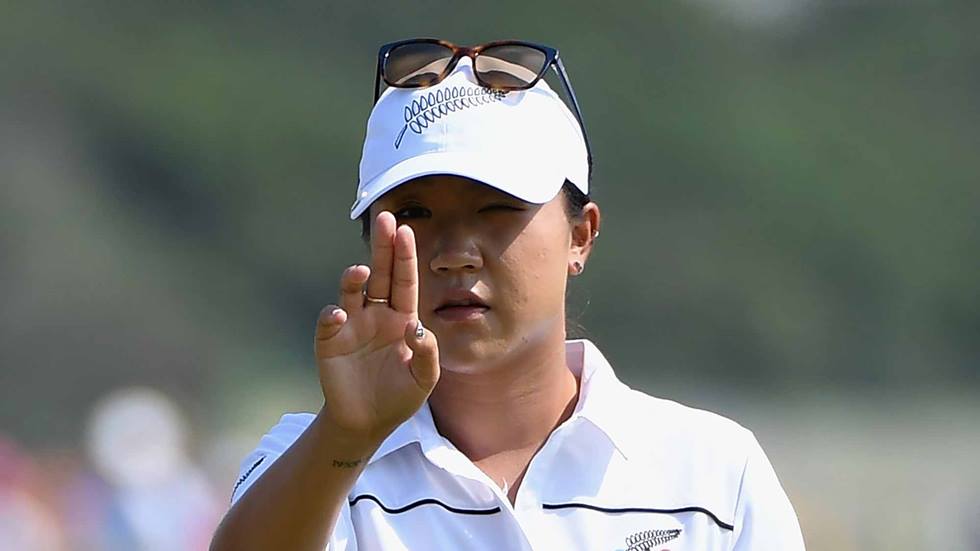
The limitation of two players per country (except for those in the top 15 of Rolex Rankings) has insured that many countries (34 to be exact for the women’s games) received golf-visibility. Without that broad exposure, the world may not have seen the talent of India’s young Aditi Ashok. And because of her success, the Indian government is probably going to take women’s golf more seriously, which means more public support and more golfers. The medal won by Shanshan Feng of China also will encourage the growth of golf in China – more courses and more importantly, more coaches for young talented golfers.
Which leads to my concluding Note: The USA had three excellent golfers in the Olympics: Lexi Thompson, Stacy Lewis, and Gerina Piller. The competition was close, but the USA did not take home a medal. (My next article “Lessons from Annika” based on her comments from the announcer’s booth offers some insights into what makes a winner.)
But more importantly, in my opinion, women’s golf in the United States does not get the attention, recognition or financial support that it deserves. Women’s and girl’s golf has grown in the U.S. primarily because of support from the USGA, LPGA, and PGA and from parents that can fund their child’s lessons. College golf scholarships are available but by then, the game has lost many potential Olympians.
My challenge to Augusta: It’s admirable that Augusta’s Drive Chip & Putt competition – held before the Masters begins – welcomes both young girls and boys in separate divisions. But Augusta stops short of comparable treatment when the girls become young women. No women’s professional golf tournaments are allowed at Augusta.
Enough of this! I am not talking membership issues that a private club is legally allowed to enjoy. I am talking about a powerful and symbolic action – holding a LPGA Tour event for example – at Augusta National. It’s time for Augusta to put out the welcome mat for women’s golf tournaments. And maybe that’s the best lesson the 2016 Olympic Golf Games can teach the United States.
Feature photos credit: LPGA.com

